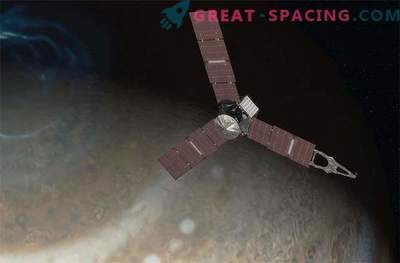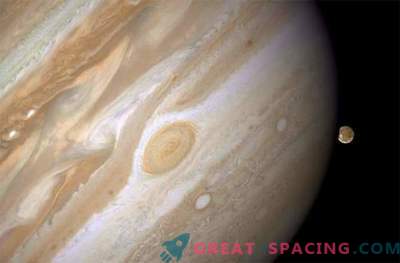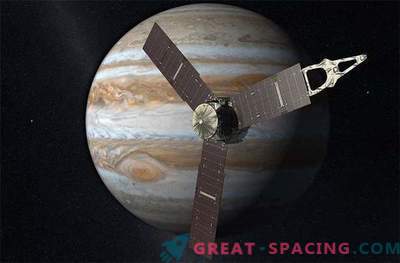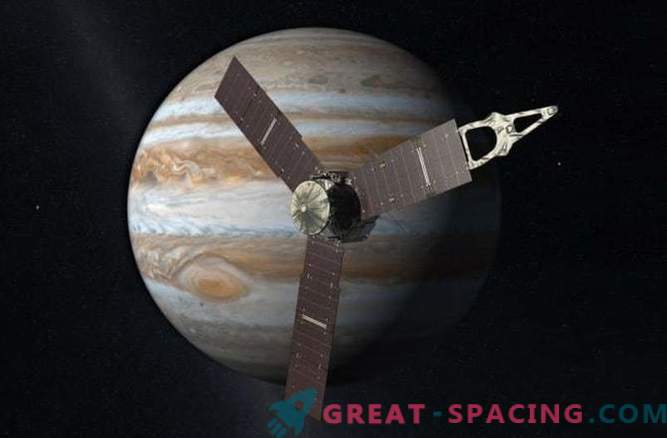
Being just a month away from Jupiter, the Juno spacecraft finally crossed an imaginary line, beyond which the attraction of Jupiter became greater than the attraction of the Sun. The next step will be the entry of “Juno” into the orbit of the king of the planets of the solar system. It is expected to take place on July 4th. The one-and-a-half-year campaign of observing Jupiter starts in November.
The Yunona spacecraft launched from Earth on August 5, 2011. Its main goal is to reach the polar orbit around Jupiter. From it, “Juno” should study the magnetic and gravitational fields of the largest planet orbiting the Sun, and test the hypothesis that Jupiter has a solid core. In particular, the spacecraft will help to study the interaction of the Jupiter magnetosphere with the solar wind and numerous satellites of the planet.
What questions will “Juno” try to answer during its mission? Look at these photos to find out the answer.
What is the weather on Jupiter?

Most of the weather observations on Jupiter are made by amateurs who can talk about color-changing bands, how the Great Red Spot is compressed or about other phenomena on the surface of the largest planet in the Solar System. “Juno” will be able to find out what is happening under the surface of the planet. It is completely incomprehensible how deep the weather processes occur on a giant planet, so “Juno” will allow astronomers to better understand them. Until now, astronomers have known that the cloud belts of Jupiter can change their shape, as well as appear and disappear. The pictures presented in 2010, taken by the Gemini spacecraft, are clearly visible. Studying pictures of the planet in three different wavelengths, astronomers were able to see the southern equatorial band of Jupiter emerging from under the clouds.
How much water is inside Jupiter?
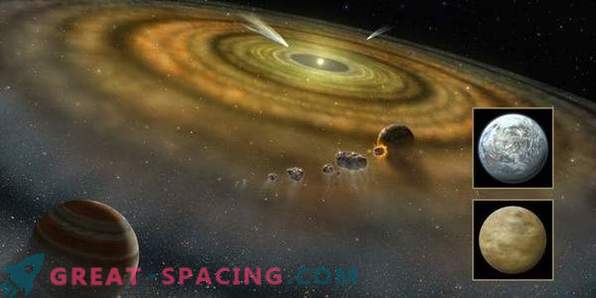
The amount of water on Jupiter is expected to help astronomers understand how the planet was formed. Scientists tend to use a mission to look inside Jupiter and see how much water is inside. It is already known that the source of water in the stratosphere of a giant planet is the impact of comet Shoemaker-Levy 9, but the amount of water at the deeper layers is unknown.
What can gravitational and magnetic fields tell us about the composition of Jupiter?
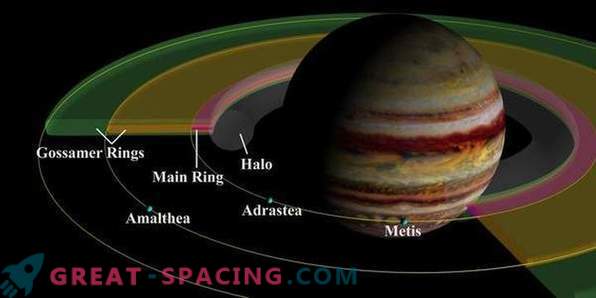
It is still unknown what constitutes the core of Jupiter (if it, of course, exists at all), the more unknown is the nature of the intense magnetic medium. On Earth the rotation of the planet's core generates a magnetic field, but the source of the magnetic field on Jupiter is unknown. Scientists hope to learn more about the composition of Jupiter, exploring its magnetic and gravitational fields.
What is Jupiter's magnetic environment?
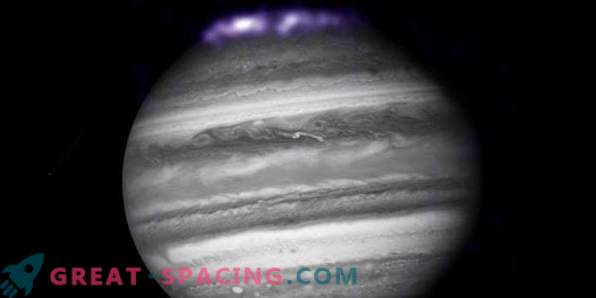
Jupiter has a very strong magnetic field that creates huge auroras on the planet. Scientists hope to better understand how the magnetosphere (the entire magnetic environment) behaves when interacting with the solar wind and with Jupiter’s satellites.
Jupiter as an exoplanet
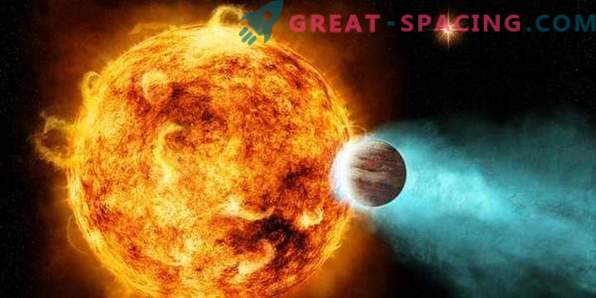
Jupiter is often considered an analogue of exoplanets, but it is unclear how similar it is to them. It is hoped that by studying Jupiter with the help of “Juno”, scientists will be able to understand how the Solar System was formed. This, in turn, will help expand our knowledge of other planetary systems.



